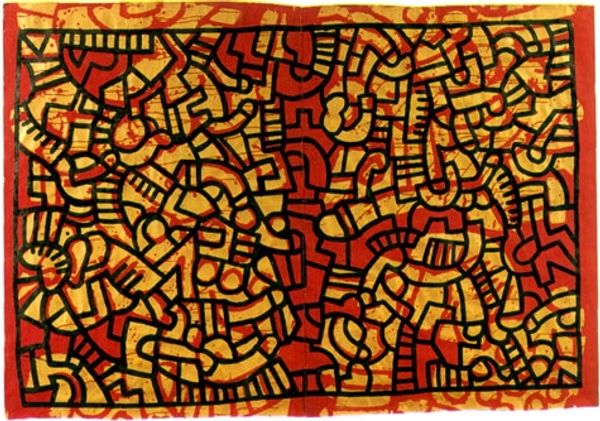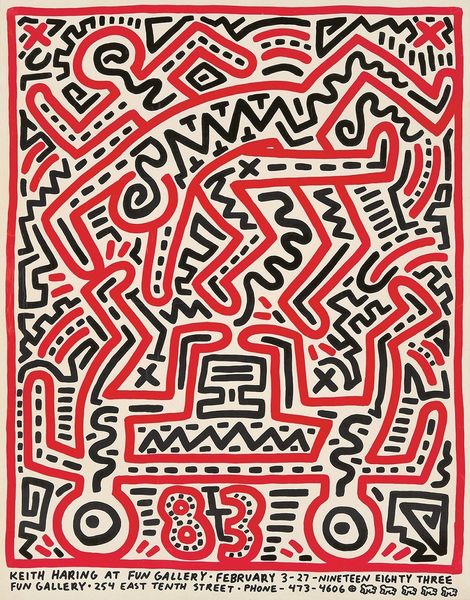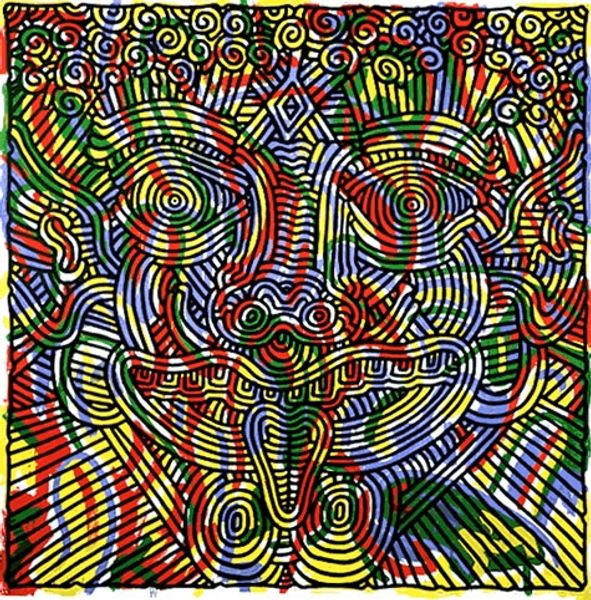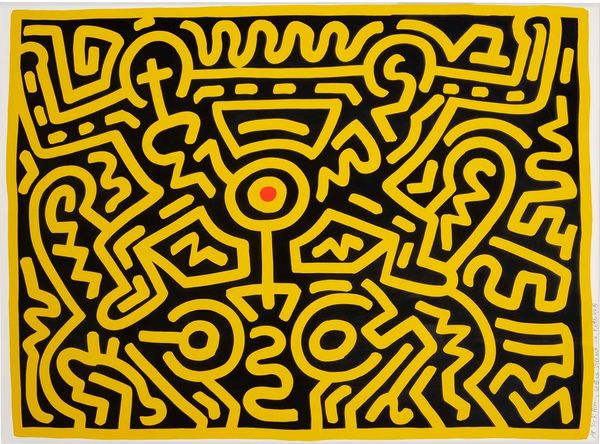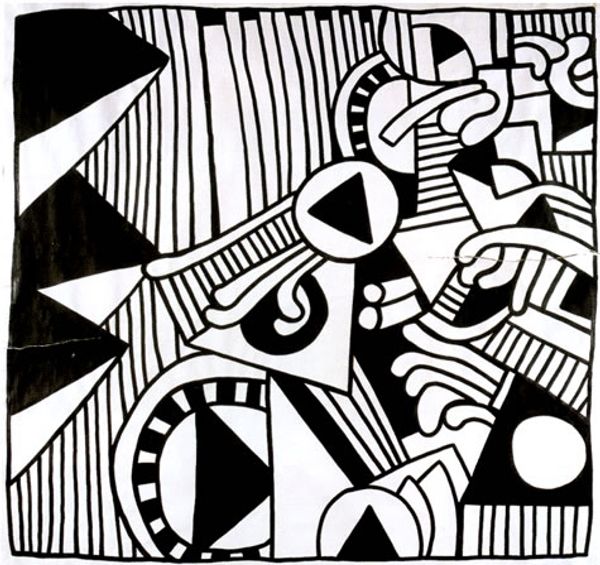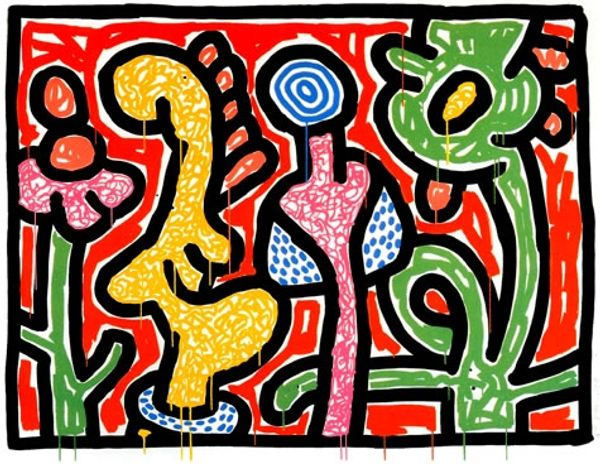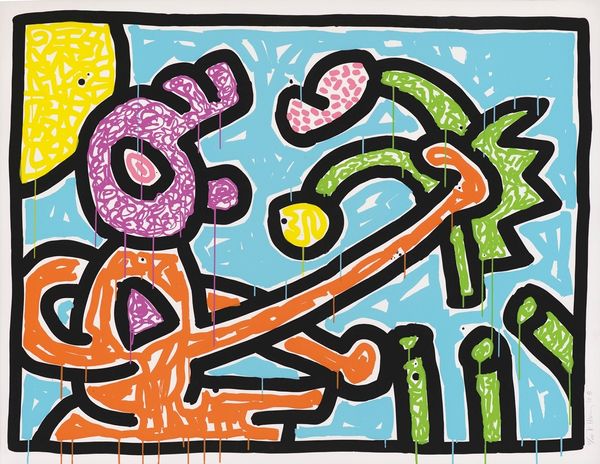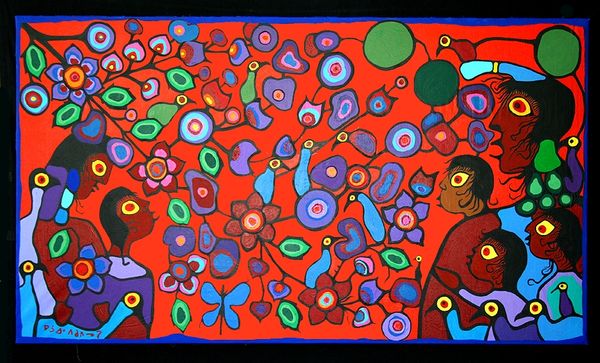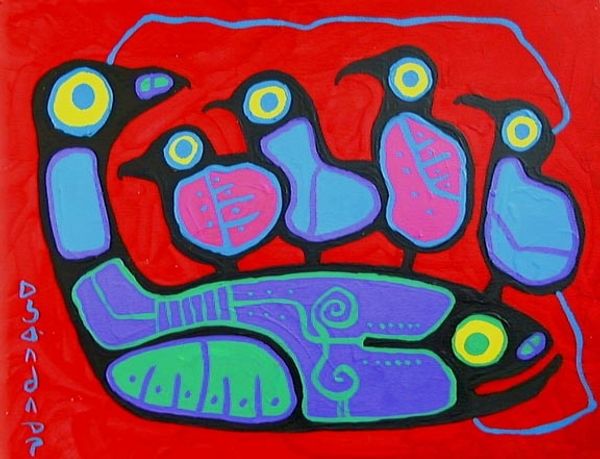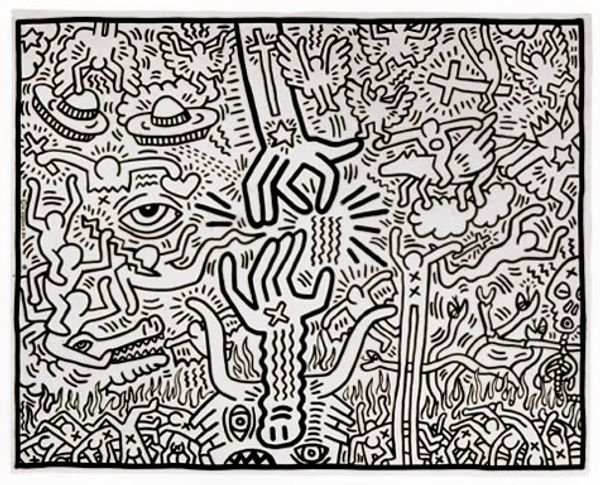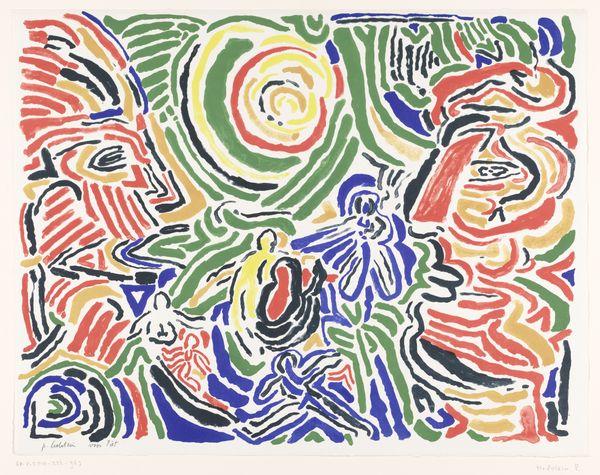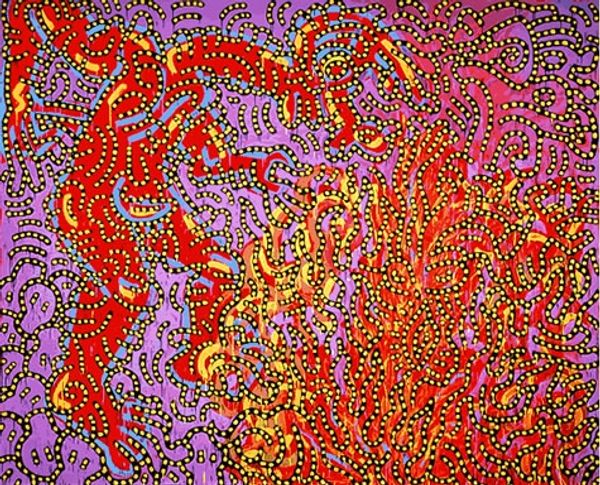
#
neo-pop
Copyright: Keith Haring,Fair Use
Editor: We’re looking at “Toledo,” a mixed-media drawing by Keith Haring from 1988. The use of vibrant colours and seemingly random characters creates a dynamic and almost frenetic energy. What do you see in this piece, beyond the initial impression? Curator: Well, beyond the immediately striking Pop Art aesthetic, I see Haring engaging with potent social commentaries. Think about 1988 – the AIDS crisis was devastating communities, especially impacting queer artists like Haring. The dense composition and interconnected figures, almost like a network, can be read as a visual metaphor for community, connection, but also the spread of information and perhaps even, allegorically, disease. Do you see how his seemingly simple figures carry complex meaning when considered within this historical context? Editor: I see the network now that you point it out! The way everything’s interconnected, it does feel like more than just a random pattern. Was he directly referencing the AIDS crisis in his work? Curator: Often implicitly, yes. His art became a form of activism. Haring used his visual language to raise awareness, challenge stigma, and promote safe sex. It's crucial to remember the sociopolitical climate he was working in; his art wasn't just aesthetically pleasing, but a radical act of visibility and a cry for recognition and change. Consider the absence of easily definable racial or gender identities among those figures; How does this further open our understanding to issues of gender, identity, and who are deemed valuable and visible during such crises? Editor: That makes so much sense. The colours become more charged, and the playful lines gain urgency. I had missed the connection between his art and activism so apparent now! Curator: Exactly. And hopefully now you see that by engaging with art through historical context and considering questions of identity and power, we unveil deeper meaning, sparking critical dialogues, just like Haring intended. Editor: Definitely! I’ll never look at a Haring piece the same way again. Thank you.
Comments
No comments
Be the first to comment and join the conversation on the ultimate creative platform.
